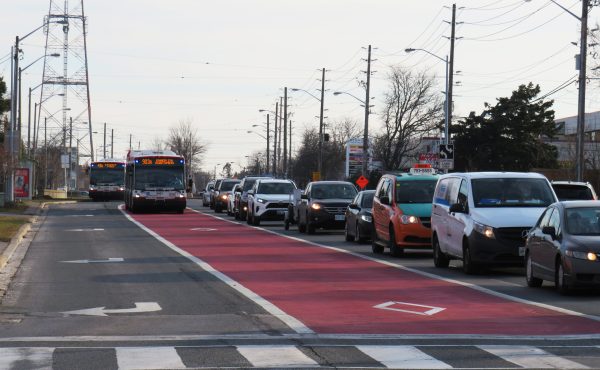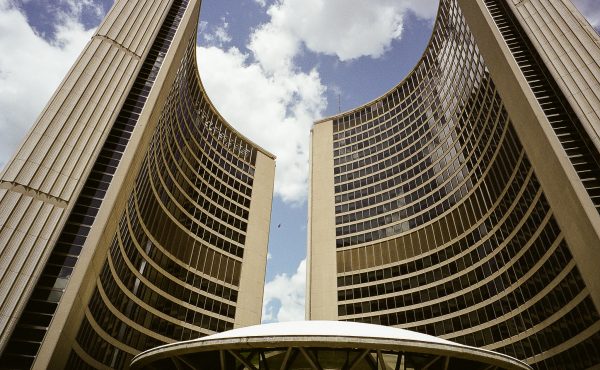After months of polarizing debates regarding the future of transit in Toronto, many citizens are not used calm, consensus-building discussions. But that is exactly what happened on in late March at a panel to discuss the current and future state of Toronto’s public transit in a discussion titled Future Models of Urban Mobility.
Held at the German Consulate, the experts — including Spacing writer John Lorinc, Leslie Woo of Metrolinx, Adrian Corry of BMW Group DesignworksUSA, and architect/urban designer Ken Greenberg — discussed how to make transit more accessible and sustainable. The four were mainly in agreement when talking about the problems and possible solutions for transit issues that face Toronto, and how we can learn from other cities when it comes to planning and design.
Corry, who has worked on transit in cities including San Francisco and Sao Paulo, said that different technologies are necessary when planning transit strategies. “No single solution is going to accommodate all the results we’re looking for,” he said.
The panel seemed to agree that in order to get people using transit, you must keep customer service in mind — something that newly appointed TTC CEO Andy Byford has also made a top priority.
Lorinc pointed out that fixing small problems such as the lack of cellphone reception and Wi-Fi on subways are simple ways to improve the riders’ experience. He said that providing electronic connectivity would be an opportunity for the public and private sectors to work together to improve service while also being mutually beneficial to both parties. All of the panelists were in agreement that the private sector will have a role to play in the future of public transit.
The panelists also discussed North America’s obsession with driving. The general consensus was that the gas-powered car is unsustainable as a primary method of transportation, and that changes in transportation will be inevitable. “Either we are going to make this great transformational shift gracefully … or we’re going to do it through crisis,” Greenberg argued.
In an interview with Spacing earlier that day, Corry said that in order to get people out of their cars and into transit, the experience must improve. “People are used to riding in their cars. They have their sense of being in control: they have their own coffee, they have their ability to connect, they have their cellphones, they can listen to the radio. And they feel basically that they are in control of the situation,” he said. Essentially, public transit must be able to compete with this in order to make trading in your car for the subway the more attractive option.
He also noted that cities must look elsewhere when considering their own transit options. “Looking at what other cities are doing, what else is happening around the world is absolutely an imperative,” he said.
He pointed out that at public transportation conferences, he sees many suppliers and transit authorities from around the world — but few from North America. “I would say it’s disappointing to understand that there’s less of an inquisitiveness around this from North America’s point of view about what’s happening in Europe or in Asia,” he said. “And therefore one draws the conclusion that less lessons are being learned.”
– – – –
Visit Spacing Radio to hear Spacing’s interview with Adrian Corry regarding the current state of public transit and how to properly plan for the future.





One comment
One of the reasons for the lack of attendance at global transit conferences is the current obsession with not spending taxpayers money on “gravy” like travel and conferences. Planners don’t attend these things and they get blamed for not casting a wide enough learning net. They do attend and the taxpayers go nuts when the Toronto Sun publishes that X amount of money was spent sending X number of people to international conferences. The quintessential rock and hard place.